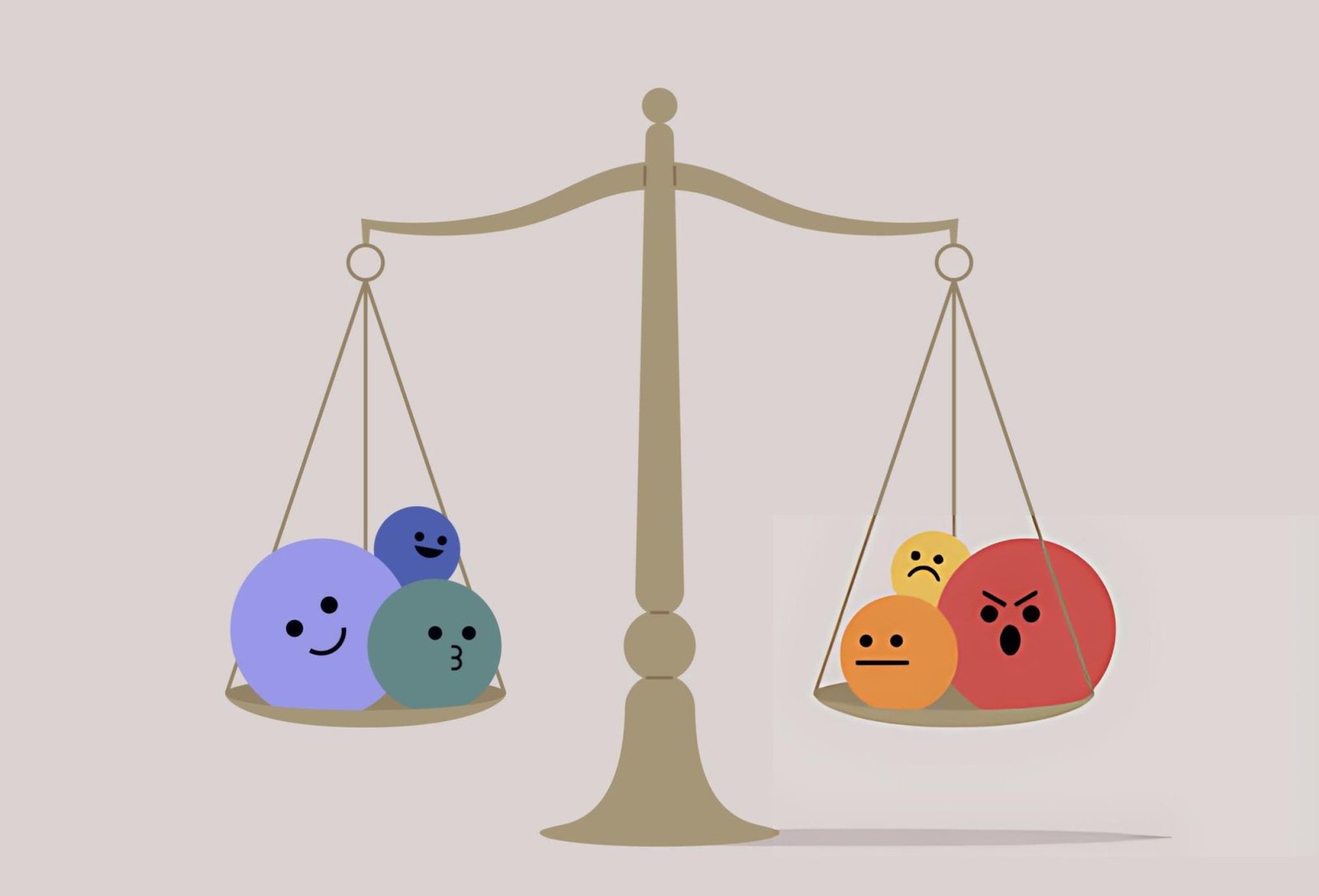Ever felt like your emotions took over, leaving you stuck in a cycle of overthinking, stress, or regret? Maybe you snapped at someone and immediately wished you hadn’t. Or perhaps a wave of anxiety completely derailed your day, leaving you feeling drained and overwhelmed. If you’ve ever reacted impulsively to a minor setback—like a rude comment or a traffic jam—you’ve probably wondered:
“Why do I let my emotions control me like this?”
Here’s the truth: your emotions hijacked your brain.
One moment, you’re calm and composed; the next, your emotions have taken the wheel, steering you straight into a storm of regret. But why does this happen? Why do emotions override rational thinking, and more importantly, how can you stop it?
Let’s dive into the science behind emotional hijacks and uncover effective techniques to reduce overthinking and regain control over your emotions.
The Emotional Hijack: Why It Happens
To understand emotional hijacks, we need to meet the two main players in your brain:
1. The Amygdala – Your Emotional Alarm System
This small part of your brain acts like a smoke detector, constantly scanning for threats. When it senses danger—whether real or imagined—it triggers an immediate emotional response. The amygdala works fast, which is great for survival but not so great when the “threat” is something like a deadline or a rude comment.
2. The Prefrontal Cortex – Your Rational Thinker
The prefrontal cortex is where all your logical decision-making happens. It evaluates situations, weighs consequences, and regulates emotions. However, it’s slower than the amygdala because it processes information carefully before reacting.
When these two systems work together, you can respond to situations calmly and thoughtfully. But when emotions are too intense, the amygdala hijacks your brain, leaving your prefrontal cortex offline. This is why you might say or do things in the heat of the moment that you later regret.
What Is an Emotional Hijack?
An emotional hijack occurs when your amygdala overrides your rational brain, sending you into fight, flight, or freeze mode. It happens quickly and often without warning. Here’s what it might look like:
- Snapping at someone in anger before you realize it.
- Freezing up in anxiety during a stressful situation.
- Making a rash decision that you regret moments later.
In modern life, these emotional responses are rarely helpful. Instead, they often leave us spiraling into overthinking or feeling stuck.
Step-by-Step Breakdown of an Emotional Hijack
- The Amygdala Senses a Threat
Your brain detects a “threat,” whether it’s criticism from your boss, a traffic jam, or a looming deadline. Even if it’s not life-threatening, your amygdala treats it like it is. - Your Body Prepares for Action
Stress hormones like cortisol and adrenaline flood your system, preparing your body to fight, flee, or freeze. Your heart races, muscles tense, and breathing quickens. - Rational Thinking Goes Offline
The prefrontal cortex shuts down, leaving you to react instinctively. Your ability to think clearly, weigh consequences, and regulate emotions is gone. - The Aftermath
Once the hijack subsides and your rational brain comes back online, you might feel regret, embarrassment, or frustration.
Why Does This Happen So Fast?
Your brain is wired for survival. The amygdala reacts immediately to perceived threats because, in ancient times, quick responses meant life or death. But in today’s world, most “threats” are emotional rather than physical. Unfortunately, your brain can’t always tell the difference.
For example:
- A rude coworker’s comment feels like a personal attack.
- A stressful deadline triggers panic.
- A driver cutting you off in traffic feels like an assault.
How to Stop an Emotional Hijack in Its Tracks
The good news? Emotional hijacks can be stopped. You can retrain your brain to respond differently and regain control. Here are proven techniques to reduce overthinking and stop emotional hijacks:
1. Practice Mindful Detachment
When emotions hit hard, pause and step back mentally. Name the emotion you’re feeling:
- “This is anger.”
- “This is stress.”
- “This is anxiety.”
Why It Works:
Naming the emotion gives your prefrontal cortex time to re-engage, helping you move from reactive to reflective thinking. This technique is a cornerstone of emotional regulation coaching programs.
2. Breathe to Reset Your Body
Shallow breathing is a sign of fight-or-flight mode. Deep, intentional breathing can calm your nervous system. Try this:
- Inhale for 4 seconds.
- Hold for 2 seconds.
- Exhale for 6 seconds.
- Repeat until your heart rate slows.
Why It Works:
Deep breathing sends a message to your brain that you’re safe, reducing the physical symptoms of a hijack. Pair this with anxiety management worksheets to track your progress over time.
3. Reframe the Situation
Once you’ve calmed down, reframe the situation with questions like:
- “Is this a real threat, or am I overreacting?”
- “What’s the bigger picture here?”
- “How can I respond in a way that aligns with who I want to be?”
Why It Works:
Reframing shifts your brain from survival mode to problem-solving mode. It’s a skill often taught in decision-making strategies for anxiety and emotional regulation coaching.
4. Take a Break (Literally)
Step away from the trigger. Take a walk, find a quiet place, or simply pause to collect yourself.
Why It Works:
This gives your prefrontal cortex time to come back online, helping you respond thoughtfully instead of impulsively. Many therapists recommend using DBT worksheets for clients to reflect during breaks.
Bonus: Tools for Emotional Regulation
Looking for practical tools to help manage emotional hijacks? Here are a few resources:
- Emotional regulation worksheets to track and understand your triggers.
- Printable mental health worksheets to guide you through mindfulness exercises.
- Downloadable DBT tools designed to help you build better coping skills.
These tools are especially helpful if you’re working with a coach or therapist offering virtual therapy for teens in California or online therapy in Arizona.
Final Thoughts: Take Back Control
Emotional hijacks are inevitable, but they don’t have to control your life. By understanding what’s happening in your brain and practicing techniques to reduce overthinking, you can regain control.
The next time your emotions try to hijack you, remember:
- Pause.
- Breathe.
- Name the emotion.
- Reframe the situation.
With practice, you’ll get better at staying calm, clear-headed, and in control.
Want to Go Deeper?
If you’re ready to stop overthinking and take back control, download my Emotional Regulation Starter Kit. Packed with tools, actionable strategies, it’s your guide to a calmer, more in-control life.









